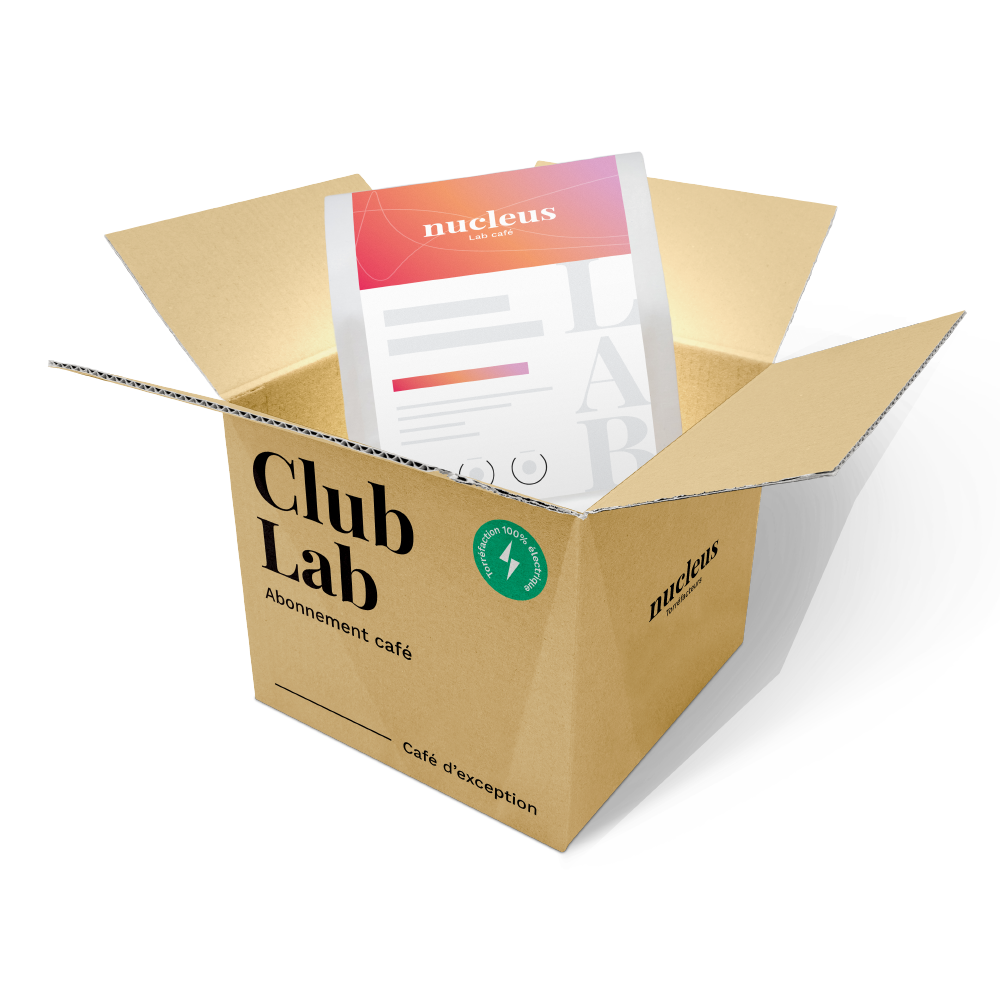Free shipping across Canada 2 bags or 1kg 🤩
Club Lab
A bi-monthly subscription that gives you access to exceptional coffees available only in micro quantities.
Each delivery highlights a specific theme to introduce you to diverse origins and explore the concepts of specialty coffee. Our team taste-tests each coffee to provide extraction guides and help you maximize your experience.
Join the Club Lab community, discover exclusive coffees and chat with other enthusiasts!
Why choose Club Lab?
- You are a specialty coffee lover and like to discover something new on a regular basis
- You want to take advantage of free delivery on every order
- You want to get comprehensive information about each coffee and exchange with other coffee lovers
- Want to save on the price of exceptional coffees by subscribing to an affordable subscription
- You want to get a personalized quantity of coffee adapted to your needs and your budget

How it works
- Every 2 months, we find an exceptional coffee
- A first test roast is made
- 2 weeks later, we taste and perfect the roasting
- On the 15th of the month, we roast the batch and ship all orders.
(Order now to receive the next batch shipped on this date)
(ps this is going to be an amazing coffee)
The latest edition of Club Lab
October 15, 2025
This month, we have a washed Wush Wush from Oscar Riascos. Oscar is a true scientist and loves experimenting with fermentation to create super clean coffees despite the relatively simple washed process. He's a friend of Wilton, who has been very active in our Club Lab this year ;)
The most...
